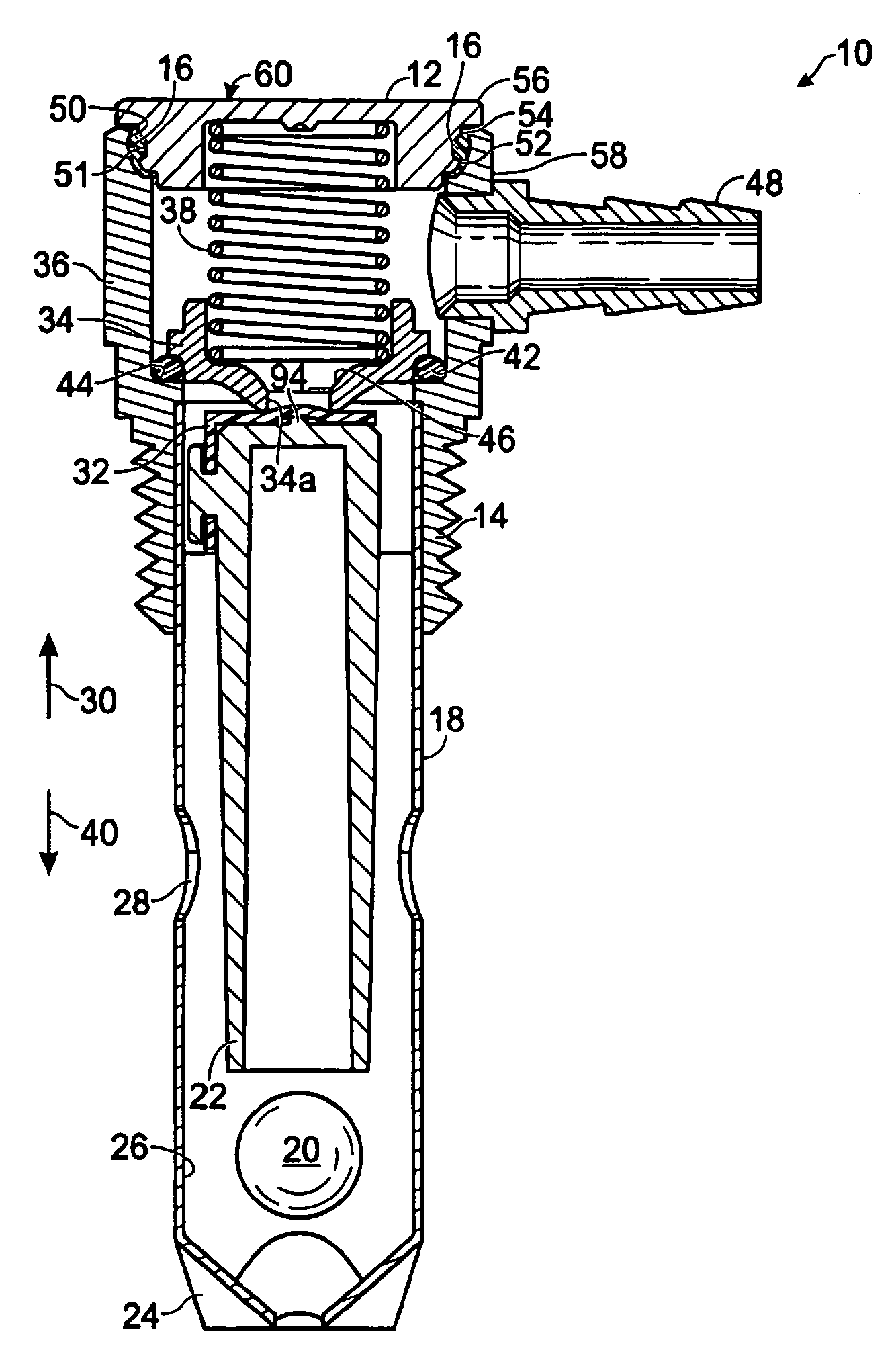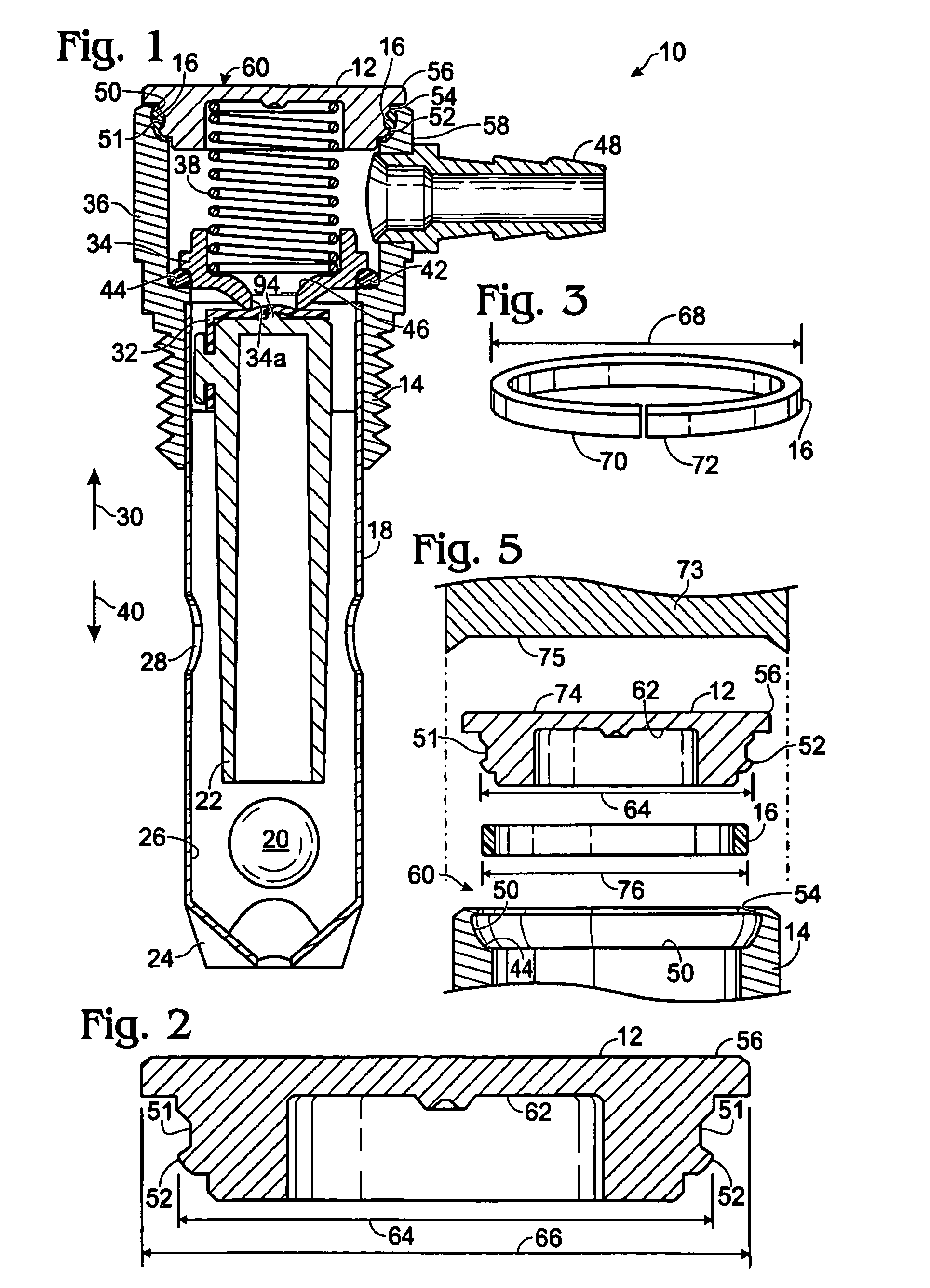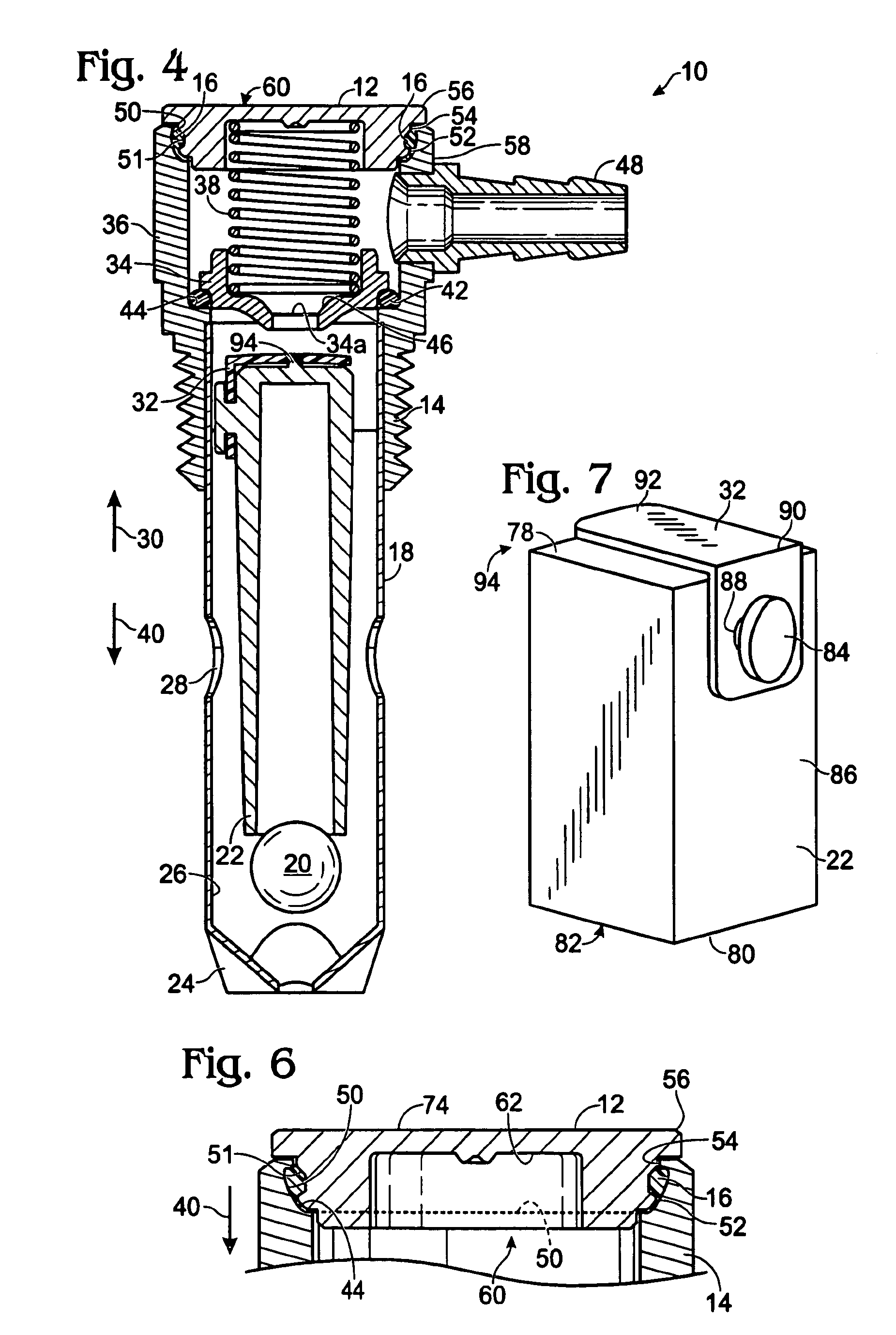Thermal relief vent and method of manufacturing the same
a technology of thermal relief vents and manufacturing methods, which is applied in the direction of mechanical equipment, functional valve types, transportation and packaging, etc., can solve the problems of exposing workers to hazards, cost of generating and maintaining molten materials, and safety equipment, so as to eliminate many hazards and expenses.
- Summary
- Abstract
- Description
- Claims
- Application Information
AI Technical Summary
Benefits of technology
Problems solved by technology
Method used
Image
Examples
Embodiment Construction
[0019]Referring to the figures, FIG. 1 shows a cross-sectional view of the thermal relief vent 10 with the vent cap 12 positioned on the vent body 14, and a ring of fusible material 16 crimped therein, with the vent shown in a pressurized configuration. In the embodiment shown, vent body 14 comprises an elongate float section 18, also referred to as a cage tube section 18, which houses a ball 20 and a float 22. Cage body 18 includes a crimped end portion 24 which prevents the exit of ball 20 and float 22 from an interior 26 of cage body 18. The crimped end portion 24 and apertures 28 allow fuel and pressure within the fuel tank to communicate with interior 26 of cage body 18. In a pressurized configuration, i.e, when the interior of the fuel tank and therefore the interior 26 of the cage body 18 is subject to a pressure above a first predetermined value, or in the condition of partial tank rollover, the fuel level will cause float 22 to move in a direction 30 within vent body 14 suc...
PUM
 Login to View More
Login to View More Abstract
Description
Claims
Application Information
 Login to View More
Login to View More - R&D
- Intellectual Property
- Life Sciences
- Materials
- Tech Scout
- Unparalleled Data Quality
- Higher Quality Content
- 60% Fewer Hallucinations
Browse by: Latest US Patents, China's latest patents, Technical Efficacy Thesaurus, Application Domain, Technology Topic, Popular Technical Reports.
© 2025 PatSnap. All rights reserved.Legal|Privacy policy|Modern Slavery Act Transparency Statement|Sitemap|About US| Contact US: help@patsnap.com



